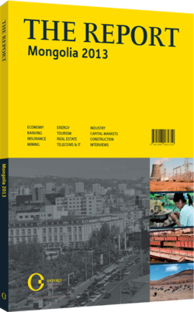Keeping options open: Wi-Fi has not stood out among the many internet services
Wi-Fi has never truly caught on in Mongolia. In its 2011 White Paper, the Information, Technology, Post and Telecommunications Authority (ITPTA) noted that only 0.2% of all internet connections were made using that method, which was even less than connections made using dial-up, which came in at 0.7% of the total. The most popular way of accessing the internet in Mongolia was general packet radio service, at 64.3%. Optic cable came in at 18.7% and xDSL (which encompasses all the various types of DSL) was 12.6%.
There were high hopes for a time that Wi-Fi would be important to the country. Because of the high number of rural residents, it was thought that the technology could solve some of the last-mile issues outside Ulaanbaatar. In 2004 USAID initiated a public-private partnership with Khan Bank and Incomnet, a local provider of internet services to remote areas, to offer Wi-Fi, especially voice over Wi-Fi, to parts of Mongolia outside the range of traditional telecoms. The idea was to leverage existing satellite links at local bank branches to offer a Wi-Fi signal to local residents. This was done in a number of locations in the Saikhan soum ( county) in Bulgan aimag (province), the Tsengel soum in Bayan-Ulgii aimag, the Ondor-Ulaan soum in Arkhangai aimag and the Tariat soum in Arkhangai aimag.
OTHER OPTIONS: While the project was deemed a success and it was determined that a similar set-up would be financially viable, Wi-Fi nevertheless took off slowly in the 2004-06 period. This was due to a variety of factors in the technology sector, such as falling prices, increasing capabilities and the rapidly rising number of available options, ranging from very cheap SIM cards to WiMAX to very-small aperture terminal. Through these, almost anyone in Mongolia can be covered at nearly every desired speed or price point. However, Wi-Fi has leapt forward in recent years in Ulaanbaatarm and coverage there is widespread.
A World Bank project completed in 2006 showed how costs have fallen with technological advancements. Bidding for the project, which involved providing a voice and Wi-Fi network in Tariat soum, was competitive and the winner came in with a price that was one-quarter of the maximum subsidy allocated.
Wi-Fi is still of interest to operators. MobiNet, a wholly owned subsidiary of MobiCom (the largest mobile operator in Mongolia) signed a memorandum of understanding (MoU) in June 2012 with First Mongolian Media to establish a partnership to provide Wi-Fi media and internet protocol TV services to Mongolia nationwide. While the announcement of the transaction – incomplete at the end of 2012 – mentioned Wi-Fi, it seemed to be a content-related deal overall.
CONTENT: First Mongolia Media is majority-owned by GoConnect, an Australian company with properties that include uctv.fm, an internet-based TV and film channel. First Mongolia will also provide technology and knowhow regarding the use of advertising to fund freely distributed media. Although Wi-Fi is mentioned, the content provided by the partnership will be available for delivery using MobiNet’s many networks.
The digital divide has turned out to be a quickly vanishing issue in Mongolia. While rural accessibility may always be a problem for the country, Wi-Fi is not likely to be the stopgap solution that it has been in some countries, such as Indonesia, where it has provided a quick and cheap fix for the many last-mile bottlenecks. The real concern for the operators in Mongolia is not so much access, but rather content and profits, and the MobiNet-First Mongolian MoU will focus on these.
WIMAX: WiMAX has suffered a similar fate to that of Wi-Fi. Though it was never pushed as a last-mile alternative to increase rural access, it was seen as a solution to slow connection speeds. The service was first launched in February 2007 by Ulusnet, also a MobiCom subsidiary, and expanded in 2011. However, usage has never boomed. It accounted for 2.2% of internet access, according the ITPTA White Paper in 2011. Mongolians have so many other options that have greatly improved over the past few years in terms of speed and reliability, and this has led the use of WiMAX to decline.
You have reached the limit of premium articles you can view for free.
Choose from the options below to purchase print or digital editions of our Reports. You can also purchase a website subscription giving you unlimited access to all of our Reports online for 12 months.
If you have already purchased this Report or have a website subscription, please login to continue.

